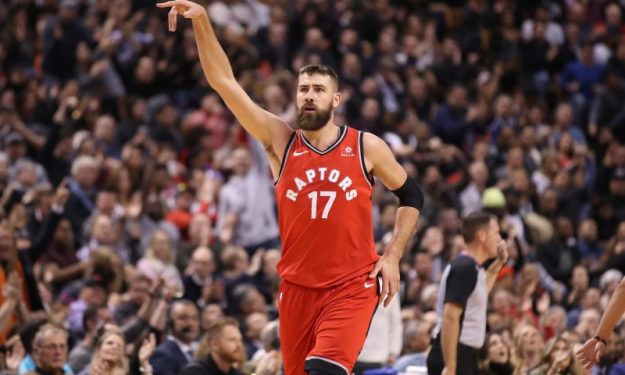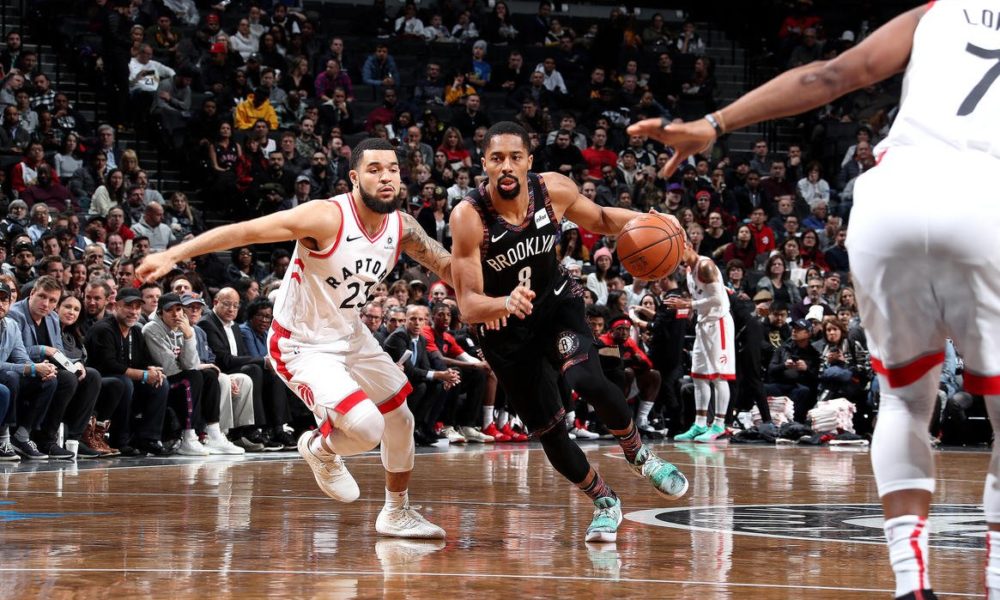Raptors 113, 76ers 102
Recap
- The Raptors pulled away during the fourth quarter for a good bounce back win against the new look 76ers.
- The Raptors did a very good job of making life difficult for Embiid and Simmons. They constantly showed them bodies and dug at their dribble, forcing the pair into 11 turnovers while limiting them to 18 combined points.
- Creating turnovers was a major factor in this game as the 76ers shot better percentages from both 2 and 3 point range, but the Raptors took 12 more FG attempts, and 8 more FT attempts than the 76ers.
- The Raptors continued to struggle covering off the ball actions (essentially, everything except ball screen or isolation actions). In this game, the 76ers caused many issues with their Embiid-Reddick DHO, as well as down screens and pin downs.
- Offensively, the Raptors were once again great in transition against the 76ers. Like the first time these teams met, the Raptors’ ability to run the floor and put pressure on the rim off of missed shots and plenty of turnovers was the difference maker.
- In addition to frustrating Embiid on the offensive end, the Raptors also attacked him on defense. In both the ball screen, and in the post, the Raptors successfully went at Embiid.
- In the half court, Kawhi bailed the Raptors out of another poor shooting performance by going 5/6 from 3 and scoring 36 points.
Defence
- As mentioned above, the Raptors did an excellent job of making life tough on Simmons and Embiid. Although they both bring a different, yet highly effective, skill set to the offensive end of the floor, the Raptors treated them very similarly – never let them feel like they are playing 1 on 1, always dig at their dribble, be overly physical with them, and never let them get into a comfort zone. To understand this, let’s look at all the turnovers committed by both of them:
A few takeaways from the above clips:
- Kawhi was again a thorn in Simmons’ side all night – constantly poking at the ball, getting into his space, and making him uncomfortable.
- Both Simmons and Embiid committed turnovers as a result of their frustration which caused them to make bad decisions in situations where, if they had remained calm, would likely not result in turnovers.
- Simmons and Embiid combined had 4 offensive fouls.
Simmons is at his best when he is comfortable creating for others, but Embiid is at his best when he is comfortable scoring in the low block, which in turn gives confidence to his perimeter game. A main reason for Embiid’s frustration was the job the Raptors’ bigs did on him in post-up situations:
Serge Ibaka was incredibly physical with Embiid in the post, which was a major factor to his frustration and poor offensive night. Ibaka had a performance like this earlier in the year against Karl Anthony-Towns when he physically took him out of the game by bullying him from his spots.
- However, it wasn’t all pretty defensively. As good as a job that the Raptors did on Embiid and Simmons, they let Reddick and Butler get comfortable, leading to 63 points combined.
- The main reason for Reddick’s night was the vaunted Embiid/Reddick DHO action (which was the most utilized action by the 76ers in the game). The Raptors really struggled with this, as they did in the Denver game. As you’ll see in the DHO breakdown below, their inability to stop the action wasn’t due to a lack of effort – they physically tried hard – but rather their fundamentals handling the action were poor.
- In the video below, you’ll see the Raptors’ guards trying incredibly hard to keep their chase as much as possible. Their goal is to bully Reddick away from Embiid and be able to blow up the hand-off, but if that doesn’t happen, they must keep as tight of a chase as possible, lose as little separation as possible, and avoid getting hit by Embiid:
In these 3 clips, notice how hard Danny Green and Kawhi are chasing both Reddick and Butler. The issue that the Raptors are having are as follows:
- Regardless of how hard they try, Reddick and Butler (but mainly Reddick) are incredibly good at creating separation and using that separation to their advantage.
- The Raptors’ bigs are non-existent in the action. They are essentially asking the guards to defend these DHO’s 2 vs 1 which, over the course of a game, is an incredibly difficult task.
In the clips above, the guards were able to reasonably keep their chase. However, the more often occurrence was the guards losing their chase early, resulting in good looks for the 76ers.
Firstly, notice what happens when the guards get caught up on the screen or lose their chase early. Reddick is as elite as they come in regards to his ability to create separation and shoot on the move, and he punished the Raptors’ guards every time they got caught up. Secondly, notice how Embiid keeps the defending big at bay by baiting JV into a reach on foul when he tries to get too involved in the action. This understanding from Embiid is another element adding to the difficultly of defending this action.
- Lastly, when the Raptors did force the guard off the 3-point line and into the lane, they chose to bring help from the nail defender (similar to the Nuggets game). Against the 76ers, they had mixed success with their nail help against the DHO.
In the first two clips, you’ll notice the nail defender getting caught too deep leading to an easy kick-out 3, as well as the nail defender not impacting Reddick enough to influence his pull up. In the last clip, the nail defender is covering Simmons who has to dive. The lack of a shooter in Simmons’ position hurts the 76ers here as they are forced to give up their advantage and move into the zones which defenders were occupying.
- Jimmy Butler had an impressive offensive performance. I am not going to break down his night, but what impressed me the most was the variety of ways in which he scored – spot up 3s, ball screen pull-ups, ripping from the perimeter, post-ups, and in transition.
Offense
- The Raptors are not overly complex on offense; if they are not scoring in transition, they are heavily reliant on ball screens and Kawhi isolations (throw in a mix of Siakam and JV post-ups, as well).
- In this game, they were fantastic in transition. Off of both defensive rebounds and turnovers, the Raptors were most effective when they pushed the pace and attacked the rim in transition:
- Not all of these clips are makes, but notice how the Raptors create open and in rhythm shots out of their offensive transition.
- Apart from having guards who like to push the pace, the greatest assets the Raptors have in transition are Siakam and Ibaka, as their ability to sprint the floor forces defences to collapse which lead to open 3’s, mismatches, and occasionally rim-runner dunks.
- Part of the reason the Raptors have been so successful in transition against the 76ers is because Embiid is a very poor transition defender. As you watch these clips, notice the pressure Embiid puts on the other 76er defenders as they have to constantly cover the rim on his behalf.
In addition to the Raptors making Embiid’s life miserable on offense, they also went at him on the defensive end. They identified that they liked JV in the post against him, and they went at him often with that match-up.
Embiid is the type of player who likes to physically and mentally dominate his opponents. He often calls out opposing bigs (ex. Andre Drummond) and feeds off of knowing that he can impose his will on you, while also making sure that you are aware that he is getting what he wants because he is better than you. If Embiid doesn’t win that battle, which is rare, it hinders his dominance. In this game, JV and Ibaka reversed the script, and it noticeably had a negative impact on Embiid’s performance.


